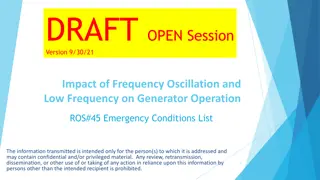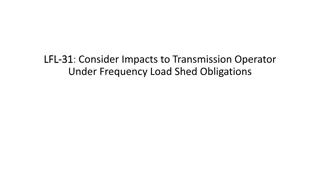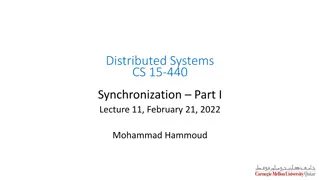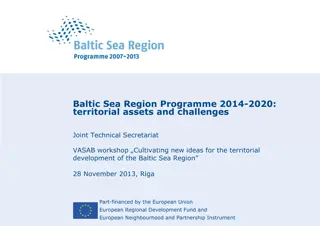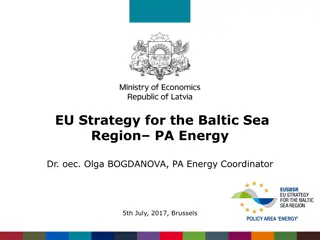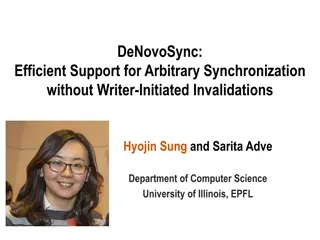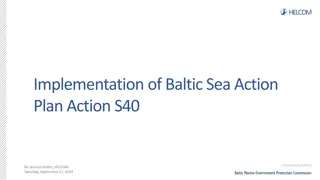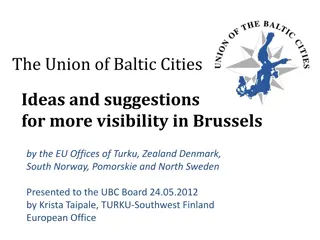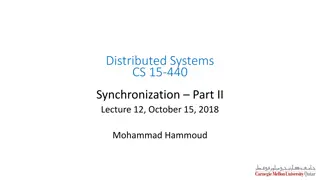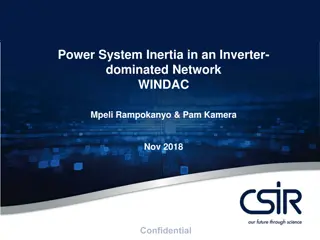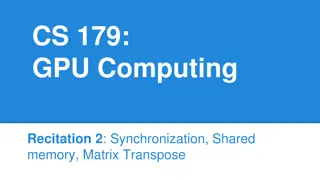Baltic Synchronization Plan and Frequency Stability Study
The Baltic Synchronization Plan explores the outcomes of the Frequency Stability Study, focusing on the effects on synchronous areas and the ENTSO-E procedure. It delves into scenarios involving existing and new HVDC links between countries like Poland and Lithuania, emphasizing the importance of the AC interface in case of outages. The plan also addresses the management of physical flows and commercial capacity on HVDC links to ensure system stability.
Download Presentation

Please find below an Image/Link to download the presentation.
The content on the website is provided AS IS for your information and personal use only. It may not be sold, licensed, or shared on other websites without obtaining consent from the author.If you encounter any issues during the download, it is possible that the publisher has removed the file from their server.
You are allowed to download the files provided on this website for personal or commercial use, subject to the condition that they are used lawfully. All files are the property of their respective owners.
The content on the website is provided AS IS for your information and personal use only. It may not be sold, licensed, or shared on other websites without obtaining consent from the author.
E N D
Presentation Transcript
Baltic synchronization plan Alexander Mondovic ENTSO-E Baltic Synchronization Stakeholder Workshop 20 December 2018, Tallinn 1
Baltic synchronization plan Outcome of the Baltic Frequency Stability Study 1 Effects on other synchronous areas 2 3 State of play of ENTSO-E procedure (system extension process) 2
Baltic synchronization plan Outcome of the Baltic Frequency Stability Study 1 Effects on other synchronous areas 2 3 State of play of ENTSO-E procedure (system extension process) 3
Baltic Frequency Stability Study Scenario number 3 from previous studies Synchronous interface on existing double circuit 400 kV AC line between Poland and Lithuania New submarine HVDC link between Poland and Lithuania Study contractor: Institute for Power Engineering, Gdansk Division (IEN) Professor Krzysztof Madajewski Study consultant: Professor Eckhard Grebe HVDC link (new link in orange) AC double circuit tieline
Schematic view Building up the understanding of how Baltic TSOs will be interconnected and operated Existing HVDC links EE New submarine HVDC link between Poland and Lithuania (minimum 500 MW, maximum 700 MW of commercial capacity and 100 MW of overloading capacity) LV LT RU AC interface: existing double circuit 400 kV line between Poland and Lithuania PL 5
Purpose of the AC interface In case of any outage in Baltic States and of their HVDC links, the Continental European (CE) system provides immediate support across the AC interface But what if the AC interface itself fails? 6
No physical flows > 100 MW on the AC interface If the AC interface fails, there is no AC support from CE Support can be provided only via HVDC links If the AC interface is used for physical flows, commercial capacity on HVDC links has to be blocked in advance to provide support in case of losing the AC interface, with less potential socio-economic benefit To avoid physical flows on the ACE interface, the commercial capacity CE/Baltic will in the first place be put on the HVDC link PL/LT Physical flows on the ACE interface due to additional commercial transactions will have to be eliminated by counter-trading or, in the future, enabled by installing batteries counteracting the outage of the AC interface The AC interface will, from operational point of view, be used as life insurance 7
And what if there is another outage after the loss of synchronism? Within the first 15 minutes after loos of synchronism Baltic and other TSOs will activate fast reserves (FRR) and decrease the flows on HVDC links FRR down Decrease flows, free a portion of HVDC links capacity ! Next outage(s) FRR down ~ After this, the HVDC links will be able to provide support in case one of them or a generator in Baltic States fails FRR up 8
Because a too high Rate of Change of Frequency (RoCoF) can lead to a black-out 10
Synchronous condensers will have to be installed in Baltic States (at least 4 of them) A level of inertia of 17 100 MWs has to be kept. This will be done with 4 new synchronous condensers with high inertia constants Existing hydro units in LT and LV will have to contribute to inertia (in synchronous condenser operation mode) or else a total of 9 synchronous condensers will be necessary This level of inertia will be kept permanently, i.e. all the time, also during synchronous operation 11
Costs for synchronous condenser action Costs for keeping 17100 MWs by hydro units in SCm and new SCs Costs for keeping 17100 MWs by new SCs 12
We need a brain the Frequency Stability Assessment System (FSAS) FSAS will collect all information from: o AC interface o HVDC links o Generating units o Synchronous condensers o And also from CE and Nordic synchronous area FSAS will permanently propose optimal solutions for generation, flow, and settings 13
Requirements for synchronization summary To commission before synchronization: New submarine HVDC link between Poland and Lithuania (minimum 500 MW, maximum 700 MW of commercial capacity and 100 MW of overloading capacity) CAPEX: up to 650 mEUR (+ ca. 10% for overloading capacity) At least four new synchronous condensers with high inertia constants in locations suitable also for increasing the short circuit power level and improving the voltage stability CAPEX: 25 mEUR/unit Frequency Stability Assessment System (FSAS) To update before synchronization: Control systems of the existing HVDC links UFLS scheme CAPEX for FSAS, control systems, and UFLS scheme: up to 10 mEUR 14
Baltic synchronization plan Outcome of the Baltic Frequency Stability Study 1 Effects on other synchronous areas 2 3 State of play of ENTSO-E procedure (system extension process) 15
Impact on the CE synchronous area During synchronous operation of the Baltic States Power System (BSPS) with Continental Europe (CE) power system CE area provides FCR in case of all outages in BSPS Via the submarine cable PL/LT, CE area provides up to 100 MW of fast frequency support in case of loss of synchronism of BSPS (on average once in about 22.5 years) During island operation of BSPS CE area (together with Nordic area) participates in activation of 700 MW of FRR for reducing the flows on HVDC links of BSPS (on average once in about 22.5 years) CE area provides up to 400 MW of fast frequency support (normally less if the Nordic area provides a part of this support) in case of outages in BSPS during island operation (on average maximum once in a century) These points have to be considered in operational planning of the Baltic TSOs and Polish TSO, PSE, all the time, but should normally not lead to additional costs in daily operation 16
Impact on the Nordic synchronous area During synchronous operation of the Baltic States Power System (BSPS) with Continental Europe (CE) power system Via existing HVDC links, Nordic area provides up to 100 MW of fast frequency support in case of loss of synchronism of BSPS, but only in case the submarine cable PL/LT is not available (on average maximum once in a century) During island operation of BSPS Nordic area (together with CE area) participates in activation of 700 MW of FRR for reducing the flows on HVDC links of BSPS (on average once in about 22.5 years) Nordic area provides up to 400 MW of fast frequency support (normally less if the CE area provides a part of this support) in case of outages in BSPS during island operation (on average maximum once in a century) These points have to be considered in operational planning of the Baltic TSOs and Nordic TSOs all the time, but should normally not lead to additional costs in daily operation 17
Baltic synchronization plan Outcome of the Baltic Frequency Stability Study 1 Effects on other synchronous areas 2 3 State of play of ENTSO-E procedure (system extension process) 18
System extension process The system extension process is in the competence of Regional Group Continental Europe (RGCE) of ENTSO-E Steps Further steps I. System extension application of Baltic TSOs submitted to RGCE on 9 October 2018 I. Implementation of measures II. RGCE examined the application and found that the continuation of the process is feasible II. Island operation test III. Trial synchronous operation III. RGCE created the Project Group Baltic and asked them to draft the Agreement with Baltic TSOs (including a Catalogue of Measures) IV. Permanent synchronous operation (in 2025 if everything is fine) IV. The Agreement with the Catalogue of Measures shall be ready for signature in spring 2019



